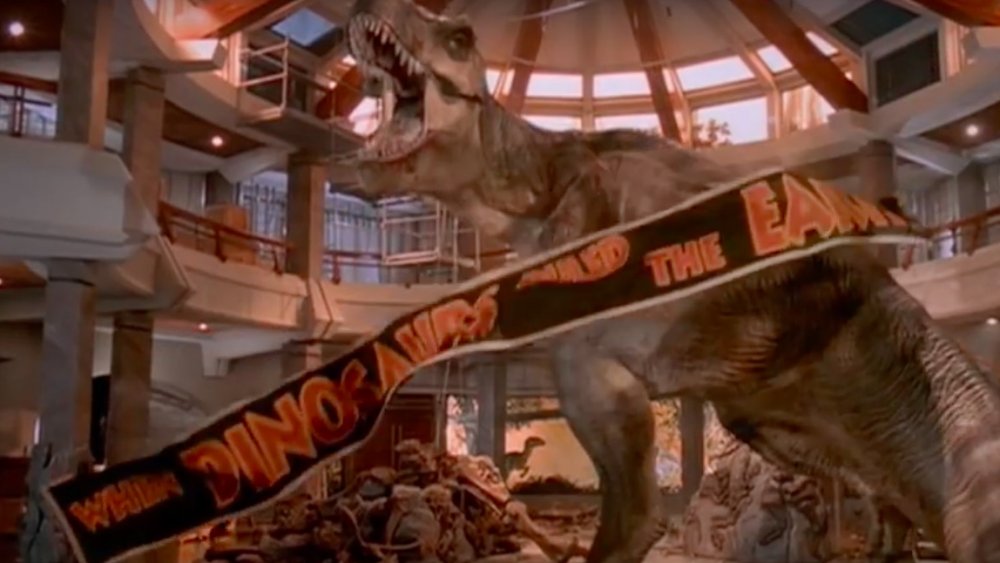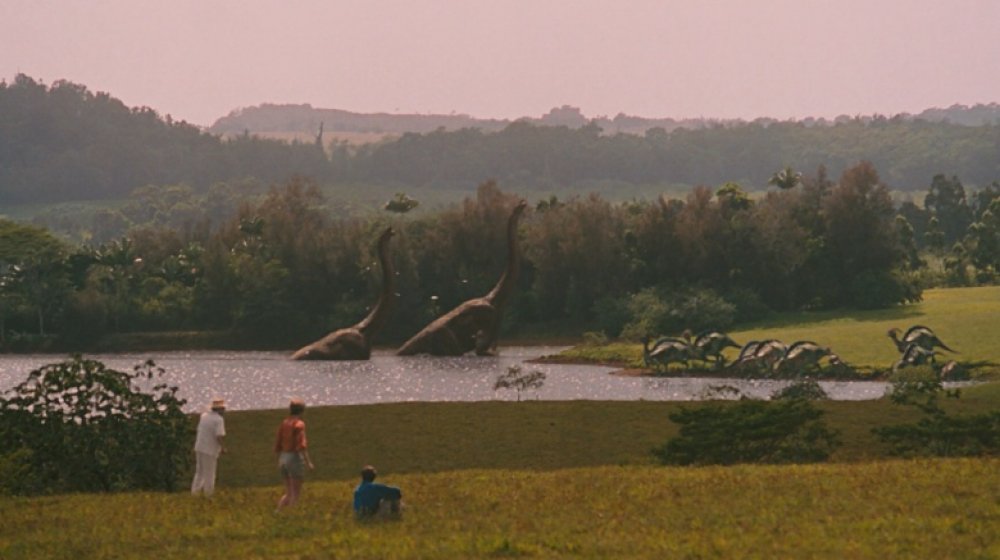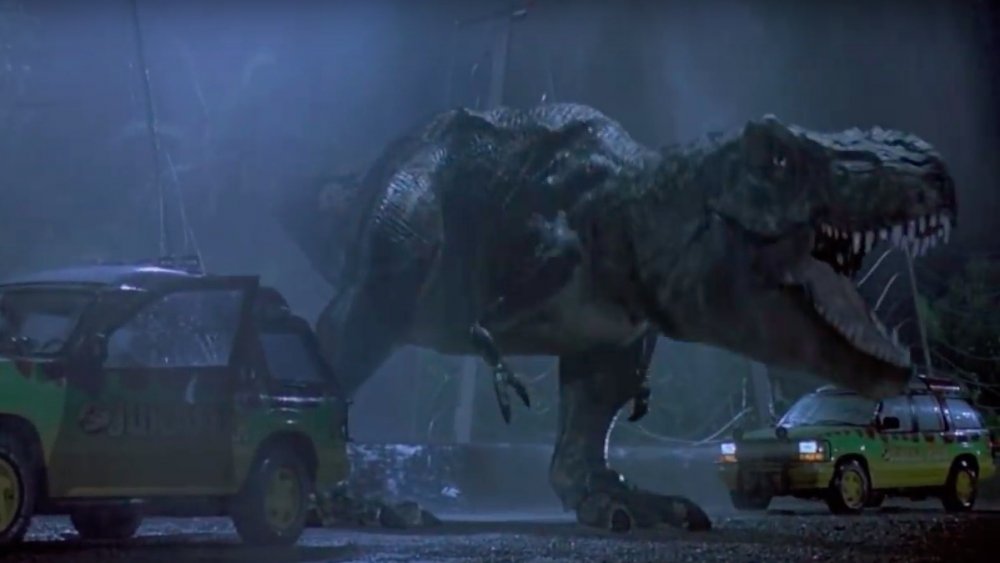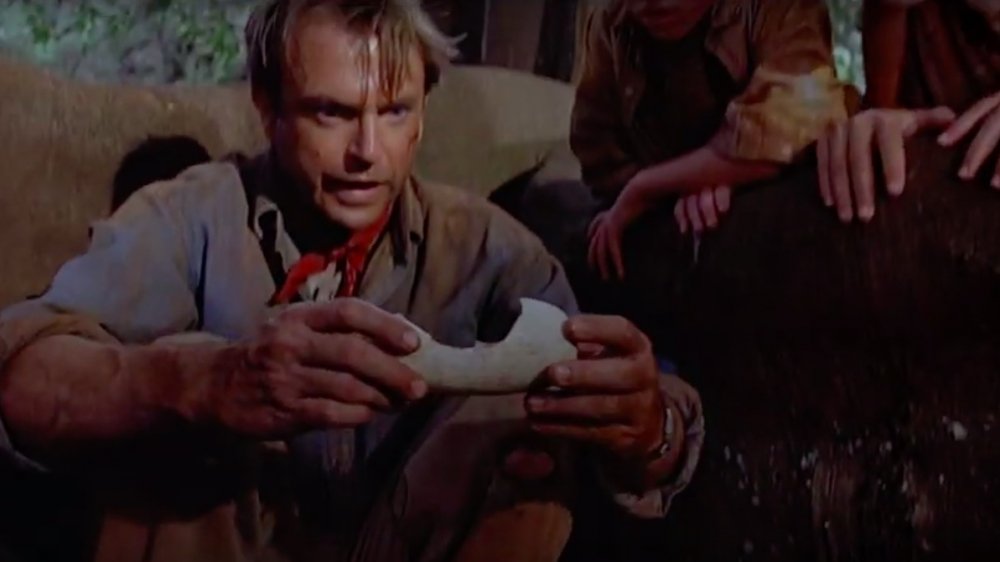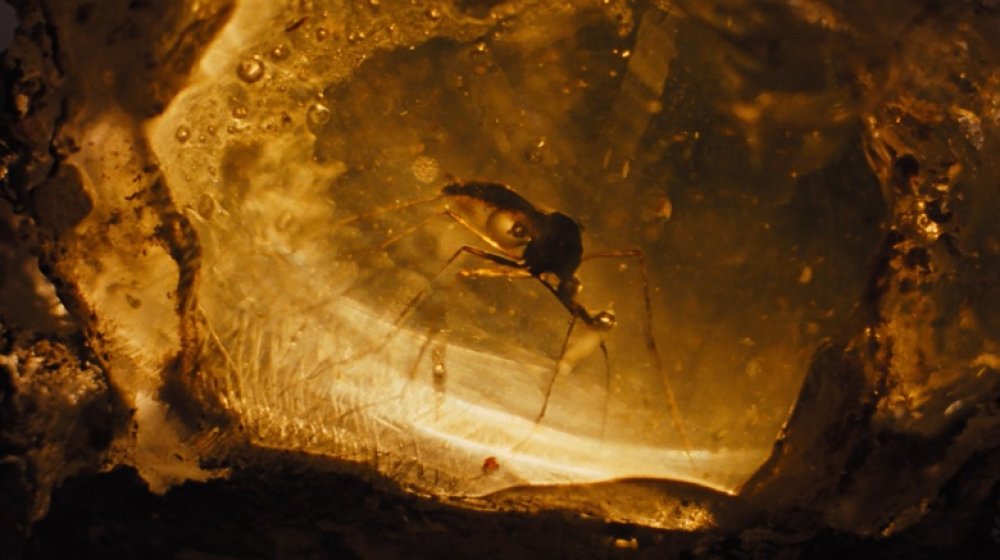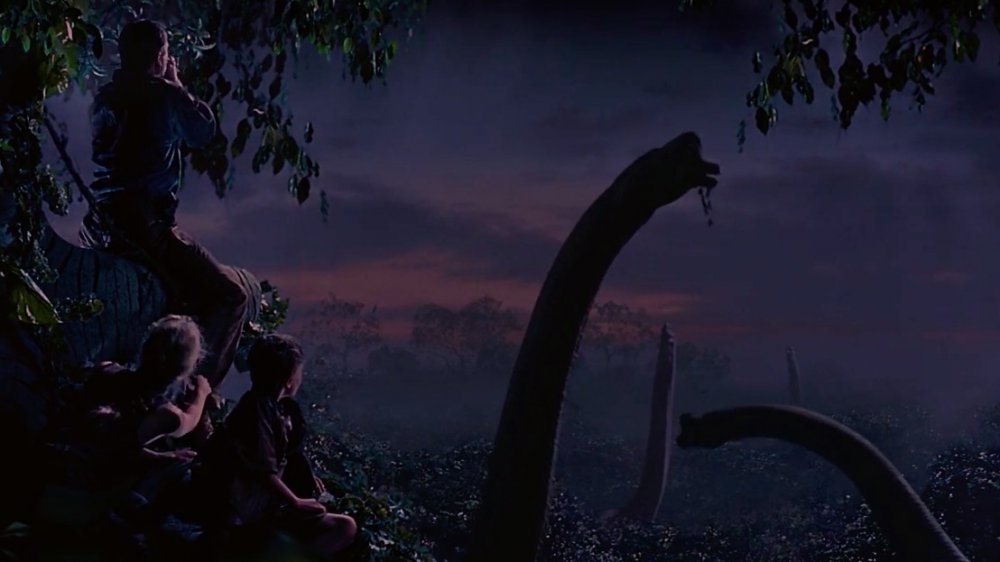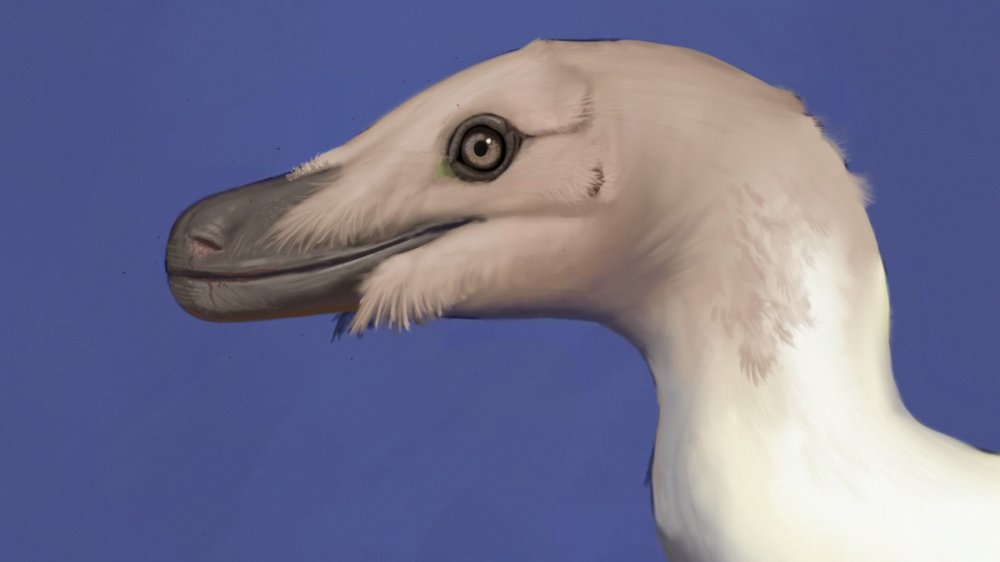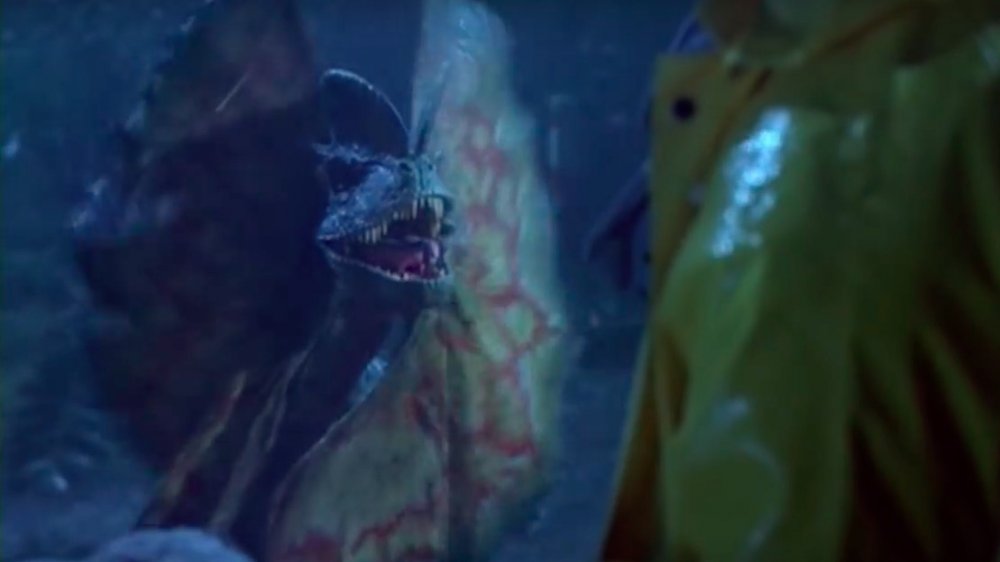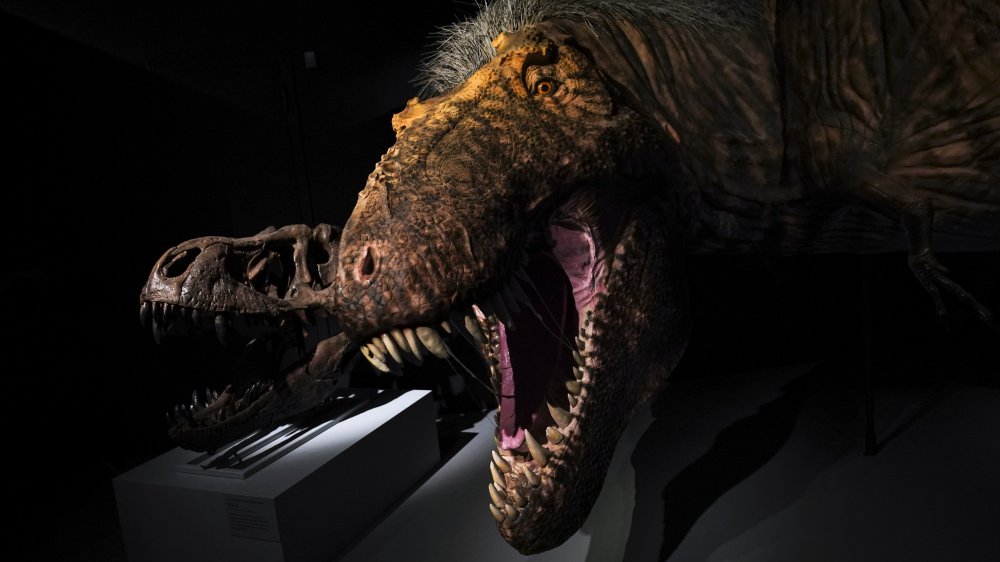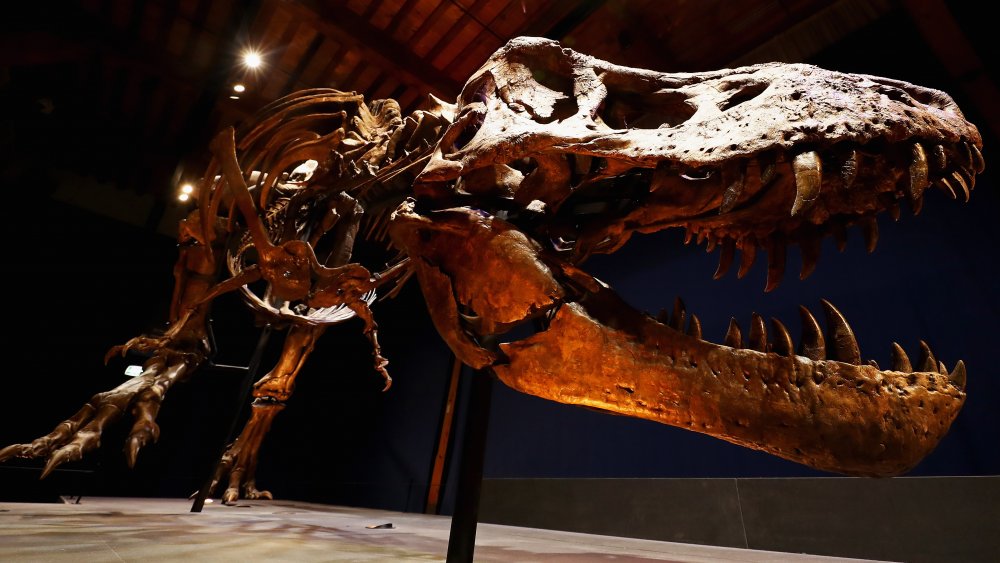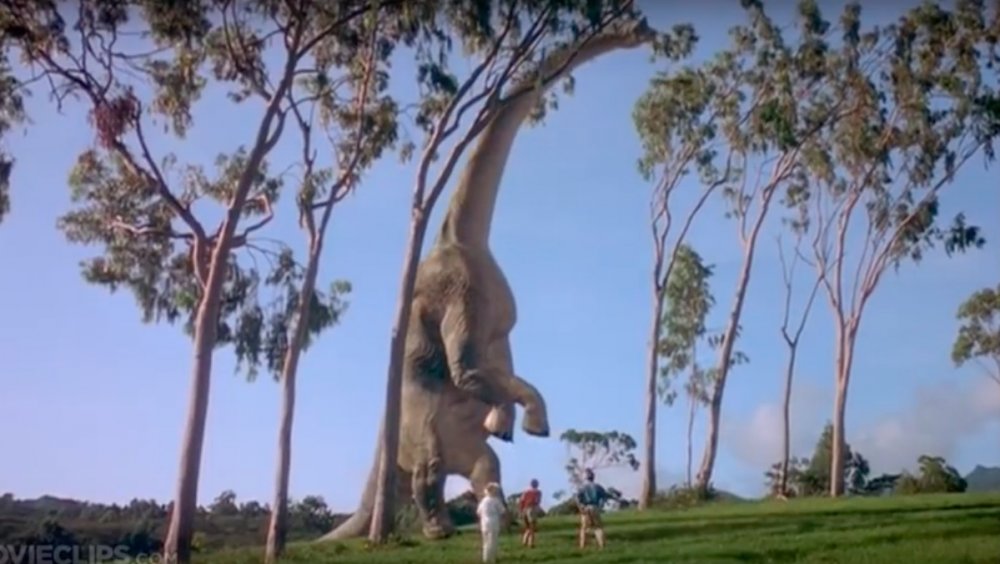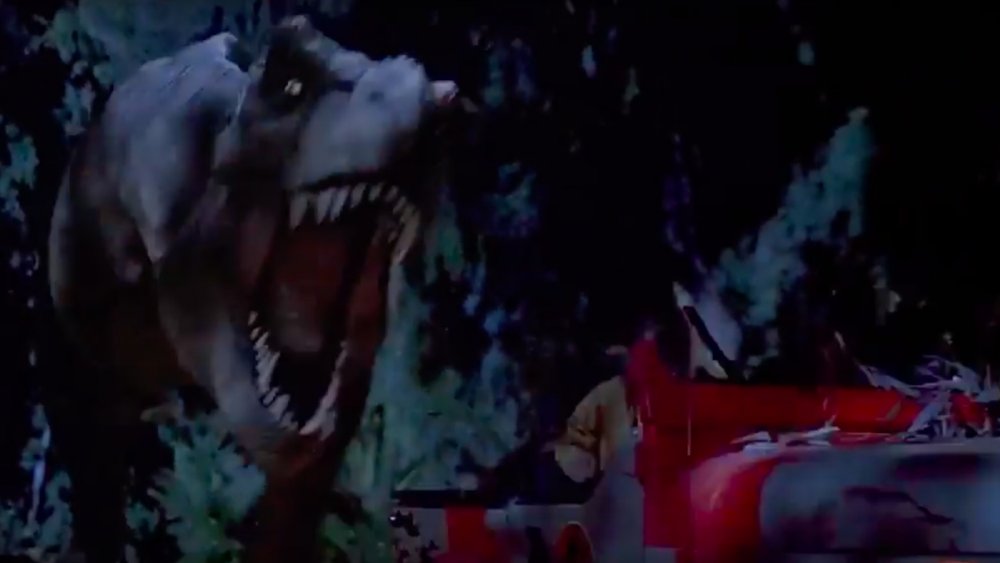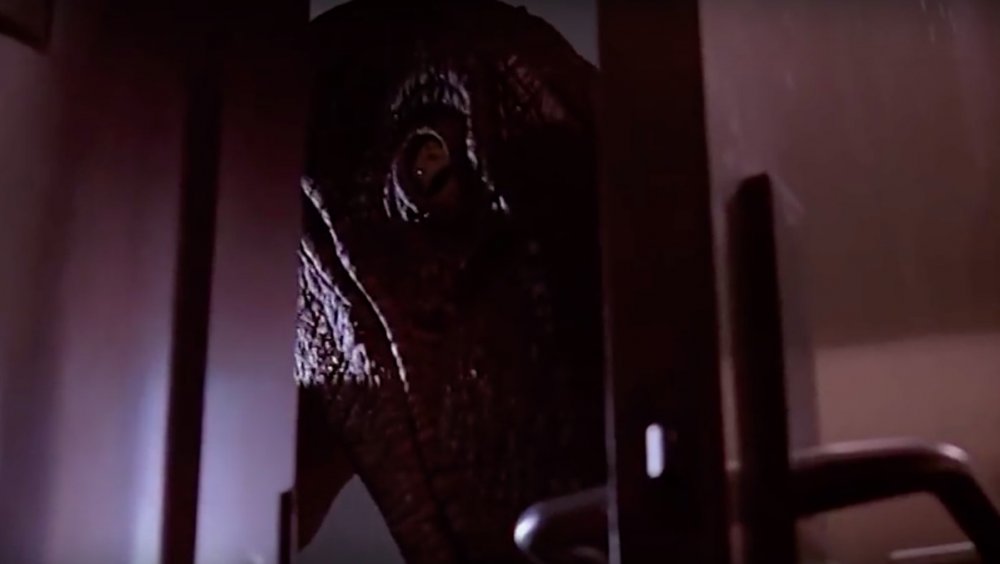Dumb Things Everyone Just Ignores In Jurassic Park
Prior to the year 1993, people became paleontologists for various reasons, including but not limited to: dino-nerdiness, book-nerdiness, and being nerdy in general. After 1993, people became paleontologists for one reason and one reason alone: Jurassic Park. Yes, a whole generation of dinosaur lovers was born in that moment where T-Rex rips the outhouse apart and then eats the poor dude who's cowering on the toilet. Before that, dinosaurs were either dusty fossils or stop-action animated embarrassments. Jurassic Park made them real. Jurassic Park brought them out of the nerd museum and into everyone's personal brain file of favorite movie monsters.
But hey guess what, Jurassic Park didn't get everything right about dinosaurs. In fact it probably didn't even get most of it right. To be fair, a lot of the dumb things in Jurassic Park and all the bazillions of follow-ups were mostly just due to the fact that scientists still didn't know a lot about dinosaurs yet and filmmakers had to make some guesses. Other things, though, were just, well, dumb. Here's a list of some of the worst.
Jurassic Park is really Cretaceous Park
Yeah okay, "Cretaceous Park" doesn't roll off the tongue in quite the same way as "Jurassic Park," and like 90 percent of the movie-going public probably wouldn't be able to pronounce "Cretaceous" anyway. But that doesn't change the fact that the title of the entire franchise is butt backward. According to the BBC, T-Rex, Triceratops, and Velociraptor all lived during the Cretaceous, which is the geologic period that came just after the Jurassic. So what sorts of dinos would you find in a truly Jurassic "Jurassic Park?" Brachiosaurus, Allosaurus, and Megalosaurus were all Jurassic dinosaurs — and let's give credit where it's due, the first two of these did have parts in different movies from the franchise, so it's not like the films were devoid of all things Jurassic.
Still, the two biggest stars from the first film were clearly T-Rex and Velociraptor, and both those species were solidly in the Cretaceous. So "Jurassic Park" is somewhat misleading, though "Cretaceous Park" wouldn't have been precisely correct either. So really, they should have called it "Jurassic-Cretaceous and the occasional Triassic dino that sometimes showed up in the novels" Park. Maybe there just wasn't enough room on the marquees.
Dinosaurs almost certainly didn't sound like the ones in Jurassic Park
Finding good sound effects for a movie is not as easy as you might imagine. It's not like they can just put some dude in a sound studio and ask him to screech like a T-Rex. For a start, no one really knows what a T-Rex sounded like, so Sound Effects Dude would have to improvise. And second, no matter how enthusiastic Sound Effects Dude was about his job, there's just no way he wouldn't end up making a noise that sounded totally lame.
So filmmakers had to go elsewhere for sound effects, and the T-Rex is ... a baby elephant. Okay, there were a couple of other animals in there, too — according to Scientific American, T-Rex was a combination of the screech of a baby elephant, the snarl of a tiger, and the gurgling sound that you had no idea alligators make that they totally do make.
We'll never know for sure what T-Rex sounded like, because the tissue inside an animal that's responsible for making sound doesn't get fossilized. What we can do, though, is look at the dinosaur's closest living relatives. Birds don't make sounds like tigers or elephants or alligators — they make sounds like birds. So T-Rex probably sounded more like a hawk than an elephant/tiger/alligator. Or maybe it even chirped like a sparrow. But hey, that would have been pretty anticlimactic for the big screen, so let's just go with the baby elephant.
Using frog DNA to 'fill in the gaps' is a pretty stupid idea
At some point during the first Jurassic Park, we learn that the DNA found inside those ancient mosquitoes was incomplete. So the geneticists responsible for cloning the Jurassic Park dinos just handily filled in the gaps with frog DNA, because it makes perfect sense to use a species that really isn't anything like a dinosaur and also everyone knows gene splicing is so simple that you might as well be caulking a crack in the wall. Anyway the end result is that the frog DNA lets the all-female population of dinosaurs change sex, giving them the ability to reproduce. What a tidy little plot point.
Even if you ignore the part where Jurassic Park geneticists made a nonsensical decision, the idea that the frog DNA would give dinos the ability to change sexes is pretty lame. First of all, doesn't it seem like maybe geneticists would know which genes they were splicing into that T-Rex and maybe avoid the gender-bending ones? According to Science Direct, the whole plot point would have been a lot more believable if the gender change thing had happened as a result of temperature or external stressors or something instead of the frog DNA — in some species, gender is not determined by genetics but by environmental factors, so an incubator set to the wrong temperature might have been more plausibly responsible for the presence of male dinos in Jurassic Park.
You can't get ancient DNA out of amber
What seemed like the most scientifically plausible part of the Jurassic Park franchise is, as it turns out, totally not even remotely scientifically plausible. According to LiveScience, literally no one has ever recovered dino-DNA from a piece of amber, or from anything else for that matter. In fact the closest they've ever come is some weird, unidentified DNA someone found in a dinosaur bone, but its presence in that bone doesn't necessarily mean it's definitely dinosaur DNA — it could just as easily be the DNA of something boring, like bacteria or an earthworm. And even if scientists knew where it came from, it was not in any kind of usable state. Scientists couldn't even identify it, much less recover and sequence it.
DNA, as it turns out, is just as fragile as skin and muscle — it starts to decay as soon as the animal it belonged to dies. The oldest DNA that was ever successfully recovered belonged to a 700,000-year-old horse found frozen in the Klondike. What's more, scientists have actually tried to extract DNA from insects preserved in amber a la Jurassic Park, and have learned that amber is an immensely bad DNA preservative.
Oh and also, the mosquito that is very clearly pictured in that chunk of amber is Toxorhynchites rutilus, a species that doesn't actually feed on blood so wouldn't have contained any dino-DNA anyway.
Dinosaurs probably would have died in the modern world anyway
Another dumb thing about Jurassic Park that no one seemed to consider is that today's world is a long, long way from the world as it existed during the Jurassic or the Cretaceous or whatever era it is we're going with. Firstly, the atmosphere was different. The balance of carbon dioxide to oxygen was not exactly the same as it is in our atmosphere, which would have made breathing challenging for our dino pals. The climate was different, too, but more importantly everything was different, from the microbes that would have lived in a dinosaur's gut to the food that it ate.
According to LiveScience, dinosaurs were designed to digest Jurassic (or Cretaceous, or Triassic) food, so that dude T-Rex pulled out of the porta-potty would have given her indigestion at best, and at worst might have even caused some kind of horrible gastric blockage that would have ultimately killed her. So in order to build a functioning dinosaur theme park with real dinos, you'd need to clone plant-eating dinosaurs for the meat-eating dinosaurs to eat, along with Jurassic/Cretaceous era plants for all the plant-eating dinosaurs to eat, and you'd have to put them all in a special bubble with the right climate and the right amount of carbon dioxide and oxygen. The good news is, you'd never have a Jurassic World sort of scenario, because an escaped dino would likely be a dead dino.
Velociraptors were turkey-sized and covered in feathers
Remember that terrifying scene in the first Jurassic Park where the kids are being hunted by the terrifying Velociraptors and one of the raptors actually opens a door, and the viewing audience is all, "Holy crap, that dinosaur just opened a door!" Now imagine if the Velociraptors were turkey-sized and covered in feathers and one of them tried to open a door, but it couldn't actually reach the handle because, you know, it's turkey-sized and the handle is waaaay up there.
So yeah, kids pursued by Thanksgiving turkeys is most definitely the world's dumbest idea for a fantasy thriller, and it's not surprising that filmmakers didn't go that route. Still, it would have made a lot more sense for the kids to be pursued by Deinonychus, which the Guardian says is closer to the fictional size of the movie's Velociraptors, though Deinonychus also had feathers, so that wouldn't have been exactly accurate, either.
To be fair, the whole dinosaurs had feathers thing wasn't really clear in 1993 — it wasn't until 2007, in fact, that scientists found "quill knobs" on the forelimb of a Velociraptor fossil, and by then the Jurassic Park dinos were already established as featherless and it would have been kind of weird to change that in the follow-up movies. And let's face it, "Velociraptor" just sounds cooler than Deinonychus, so artistic license. Whatever.
Dilophosaurus wasn't like that
In the first film, Newman ... err ... Dennis Nedry, encounters a Dilophosaurus in the forest as he's attempting to escape with some stolen dinosaur embryos. This particular Dilophosaurus is a tiny thing with a fancy neck frill that spits venom all over poor Dennis and then eats him. Which is cool, because it makes for a rather dramatic, terrifying, and arguably deserved death for our villain, but in reality Dilophosaurus was nothing like the creature in the film. According to Mental Floss, the real Dilophosaurus was over 20 feet long, which means it wouldn't have needed venom to be an effective predator. Also, there isn't any evidence that it was a venom spitter, so there's that.
Jurassic Park's Dilophosaurus also had those vibrating neck frills, which are similar to the frilled lizard that is native to Australia and uses its elaborate neck frills, along with its yellow mouth, to intimidate larger animals. In the frilled lizard this tactic is merely a bluff — if it's not successful in frightening its foe it turns and runs away. In the Jurassic Park Dilophosaurus, it's unclear what this strategy might be for. Surely Dilophosaurus doesn't want to scare its prey away or anything, and in real life a 20-foot predator would have been scary enough without the extra bizarre and unnecessary bells and whistles. But hey, Dennis gets what's coming to him so who cares about science and stuff, right?
T-Rex probably also had feathers
Feathers weren't exactly a feature of the dinosaurs we looked at in picture books when we were kids, so it's kind of hard for us to reshape our mental picture of what some of these creatures might have looked like. T-Rex presents a special problem because most people imagine T-Rex as an animal that looks exactly like the one in Jurassic Park, but if that was a real T-Rex she'd probably spend all her time hiding behind a bush because she'd be embarrassingly naked.
Scientists now think that T-Rex, like Velociraptor, had feathers. Granted, adult T-Rexes may not have been completely covered with feathers, but according to the American Museum of Natural History, they probably at least had patches of feathers on their heads, backs, and tails. Juveniles were likely more feathered, in fact, they were probably even fluffy, and dare we say it, cute.
Feathers were not unique to just a few species of dinosaur, though. Scientists now believe that nearly all non-avian dinosaurs had feathers, which means that all the dinos in Jurassic Park really should have been hiding behind bushes because they were all nakey.
'It can't see you if you don't ... oh, wait'
If you are ever unlucky enough to encounter a T-Rex in the wild, or in New York City or whatever, you might be tempted to follow the advice of Dr. Alan Grant from Jurassic Park: "Don't move! It can't see us if we don't move." Well, sorry Dr. Grant, but you're a bad paleontologist. According to Gizmodo, which evidently knows more than you do, T-Rex could see just fine, and standing very, very still would have been a great way to get eaten.
How did scientists figure that out? Well, they built scale models of T-Rex and did experiments involving glass eyeballs and laser pointers, and from there were able to discern the visual field, binocular range, and depth perception of the king (or queen) of dinosaurs. Based on the results, T-Rex had binocular range that was likely broader than that of a hawk. Calculations also seemed to suggest that T-Rex's eyeball had visual clarity between three and four times better than a hawk's, which is the equivalent of 13 times better than a human. So if you were standing in front of a T-Rex following Dr. Grant's advice, really the only reason why you wouldn't get immediately eaten is because T-Rex would probably be stunned into temporary inaction by your apparent stupidity.
Brachiosaurus was way too huge to stand on its hind legs
In the original Jurassic Park, Dr. Grant and his entourage are riding along in a jeep when they are surprised by the sight of an enormous Brachiosaurus — their first look at the living dinosaurs occupying the island. Brachiosaurus is basically just walking around being huge and impressive, and then, because being huge and impressive just isn't enough, we see it rear up on its hind legs to grab all those choice leaves from the top of a tree, and then come crashing back down with an earth-shattering "boom" because we hadn't already figured out just how massive the thing actually is. Which all seems pretty showoffy, actually, because it's not like there weren't plenty of leaves at eye level, but okay.
The real problem with this scene, though, is that it's just not very plausible. According to Live Science, Brachiosaurus weighed something like 62 tons and had backwards limbs, with longer legs in the front and shorter legs in back. Which ultimately means that the act of rearing up on its hind legs would have used a lot of energy, way more than it could afford to use especially given that there were plenty of leaves right there at eye level. In fact Brachiosaurus was so huge, weirdly-shaped, and necessarily conscious of how much energy it was using that it probably didn't even like to walk up hills, let alone rear up on its hind legs.
T-Rex was not fast
Cheetahs are pretty danged fast, but a cheetah only has access to its top speed of 75 mph for roughly a quarter of a mile or so, then it has to decelerate. On average, a cheetah can really only run about 40 mph for any length of time, and even then it needs to catch its prey pretty quickly or risk running out of fuel.
T-Rex was, scientifically-speaking, way bigger than a cheetah. And according to a recent study published in the Journal of Experimental Biology, bigger animals are not the fastest. In fact it's the medium-sized animals, like the cheetah, that rule when it comes to achieving top speeds. So a cheetah, if it was the animal chasing our heroes in the first installment of Jurassic Park, might have been able to keep up with that Jeep for a few beats, but it would have pretty quickly fallen behind. A T-Rex wouldn't have stood a chance — in fact, scientists now think T-Rex's legs were too long compared to the rest of its body for it to be capable of running at all. If it tried, its legs might have snapped under the weight of its portly form. Instead, it probably walked everywhere, though granted it was a really, really fast walker, reaching a top speed of around 25 mph. Fast enough to catch a human on foot, but not fast enough by far to keep pace with a Jeep, even for a few seconds.
Most dinos probably weren't that smart
In Jurassic Park the first, the Velociraptors are hunting their young victims indoors, and we learn an amazing fact about them: They're smart. Like, smart enough to figure out the mechanics of a door handle and let themselves into the kitchen where the kids are hiding. In fact, later on in the franchise we learn that they're also smart enough to be trained.
So how smart were they, really? Well, the University of Arizona says they were at least as smart as a rabbit, but probably not quite as smart as a dog. So if you can imagine a bunny learning how to open doors, then maybe you'll buy that whole scene. But, just because they were smart as certain modern animals doesn't necessarily mean they were smart in the same way. The University of Arizona goes on to say that their brains were really primitive, so their smarts could have been confined to well-developed senses, which means they were probably not capable of strategy or door handle manipulation.
T-Rex, though, might have been an exception. It had a pretty big brain, and some scientists think it might have been smart — even as smart as a chimpanzee, which means door-opening could have been within its capabilities. Though fitting through an average human-sized door clearly would have been a problem for it, so those kids still would have been pretty safe in that kitchen.
